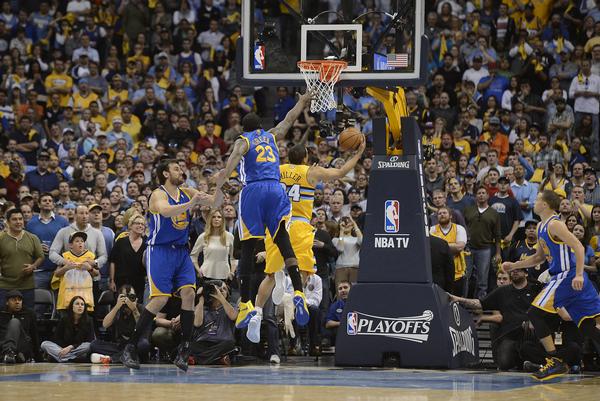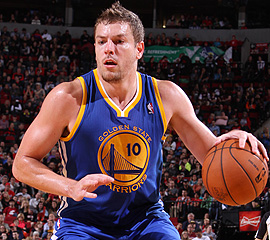(Written For Blue Man Hoop)
Carl Landry is expected to leave as a free agent this summer. Despite this, the Warriors’ frontcourt should be able to improve going into next season, complimenting an already elite backcourt.
The easiest route to a superior frontcourt comes through internal improvements. Improved health from Andrew Bogut could give him increased mobility and comfort in the offense, potentially improving the Warriors both offensively and defensively. Festus Ezeli, Bogut’s back up, was a rookie in the 2012-13 season and should improve naturally as he increases his understanding of NBA rotations and positioning. Ezeli’s offensive game was close to non-existent this season, mostly due to an inability to catch less-than-perfect pass, especially when on the move. If Ezeli’s “hands” improve, he may become more of a threat to finish pick and rolls, secure offensive rebounds, and take advantage of opportunities when opposing big men abandon him to play help defense.
At power-forward, Draymond Green showed promise during the Warriors’ playoff run. Green is already a very good defender and has potential as a stretch four offensively. He shot only 20.9 percent from three in his first year but improved to 39.1 percent during the playoffs. Even as a poor shooter, Green’s position on the perimeter forces defenders to a few steps further out of the paint that David Lee typically would offensively. Though inconsistent, Green often shows good court vision and was a very good rebounder in college. He finished the season with an assist percentage of only 7.0 percent and a total rebound percentage of 13.5 percent (many of his minutes came at small forward, affecting rebounding numbers) but has the fundamentals and physical abilities to be an above average rebounder. Any offensive improvement from Green would be a welcome addition to his already excellent defense and could greatly improve the Warriors’ frontcourt.
Harrison Barnes, like fellow rookie Green, had success playing power-forward during the playoffs. Though it is unlikely that the Warriors rely on Barnes as a full-time power-forward, stretches of small ball could help the Warriors replicate their playoff success. At power-forward, Barnes is able to attack slower players from the perimeter and has fewer defensive big men to account for at the rim. Many power-forwards are not accustomed to defending players on the perimeter, giving Barnes, a 35.9 percent three point shooter, open opportunities. Even when opponents add a perimeter player to match the Warriors, defensive help schemes often force opponents to leave open shooters on the perimeter against four out lineups.
Both Barnes and Green will also get significant time at small forward next season. The off-season improvements of both players will change the Warriors outlook at both small-forward and power-forward.
While a free-agent signing is unlikely due to the Warriors’ salary situation, there are several valuable front court players on the market this offseason that could potentially be obtained through sign and trades or outright signings using the mid-level exception. Players like Marreese Speights, Elton Brand, Earl Clark, Lamar Odom, Chris Anderson, Mike Dunleavy, and a few others could all potentially be signed under the mid-level exception. However, that the Warriors choose to sign a power-forward if they are willing to enter the luxury tax, as retaining Jarrett Jack is likely a higher priority for the front office.
The Warriors could pursue alternative routes, including a sign and trade or actual trade but most of the necessary frontcourt improvements can likely be made within the orginazation.




